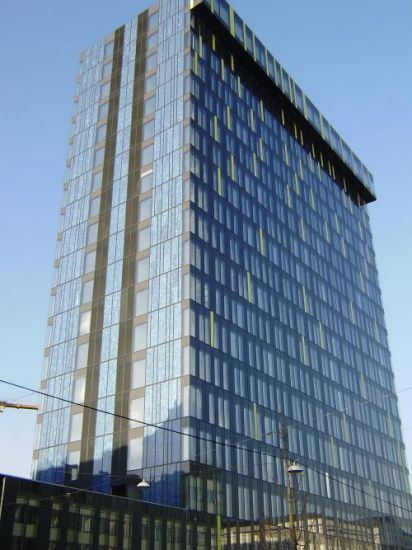Type Office Tower Country Austria Completed 2008 Height 74 m Floors 19 Inaugurated 8 September 2008 | Town or city Linz Current tenants Energie AG Floor count 19 Opened 8 September 2008 Floor area 2 ha Construction started 2006 | |
 | ||
Similar Wissensturm, New Cathedral - Linz, Lentos Art Museum, Pöstlingbergbahn, Offenes Kulturhaus Oberösterreich | ||
The Power Tower is the first high-rise office tower to attempt to meet the strict Passive House energy efficiency building standard. It was built to house the corporate headquarters of the Austrian utility company Energie AG in Linz, Austria.
Contents
- Map of Power tower 4020 Linz Austria
- History
- Building Energy Systems
- Advanced Building Envelope
- Geothermal Heating and Cooling
- References
Map of Power tower, 4020 Linz, Austria
In accordance with the Passive House standard the building has no connection to the local district heating system, and requires no fossil fuel inputs to maintain a comfortable interior climate, resulting in much lower carbon dioxide emissions than comparable buildings.
History
In 2004 Energie AG decided to replace its corporate headquarters, built in the 1930s, with a much more efficient building. After an architectural competition the Zürich firm Weber/Hofer was chosen to lead the design effort. In the spring of 2006 construction began on the 3,750 m^2 lot. The site houses a parking garage, a two story building, and the 19-story office tower. Construction was completed in the late summer of 2008, and the building now provides offices for 600 employees of 13 different companies.
Building Energy Systems
The Power Tower minimizes its external energy consumption via several integrated systems.
Advanced Building Envelope
The building envelope was specially engineered to allow maximum daylighting while minimizing solar gain, which would normally be excessive and require a great deal of active cooling, given that two thirds of the facade is composed of glazing.
Geothermal Heating and Cooling
Beneath the building, 46 geothermal wells, each 150 m deep were drilled prior to construction.
